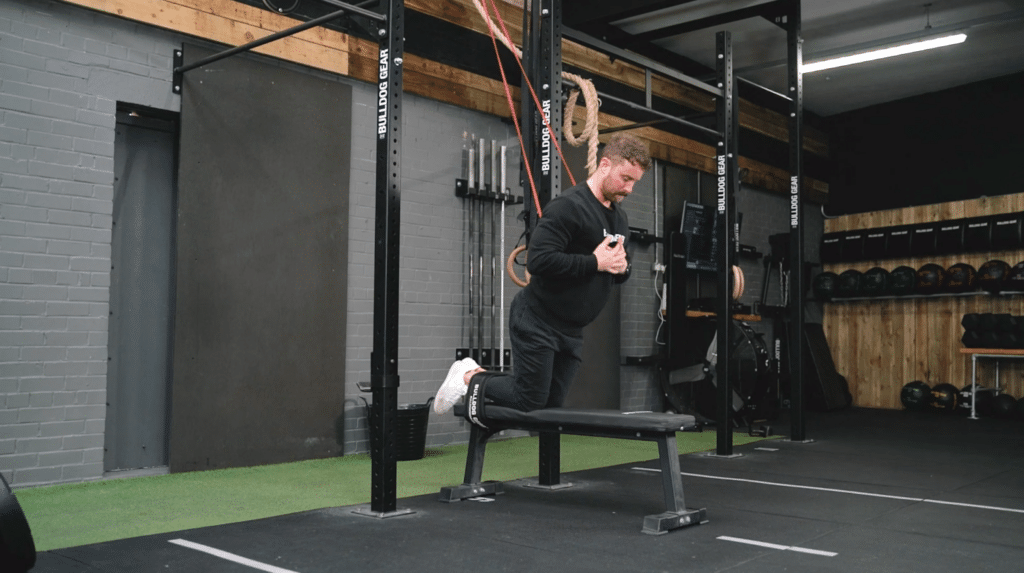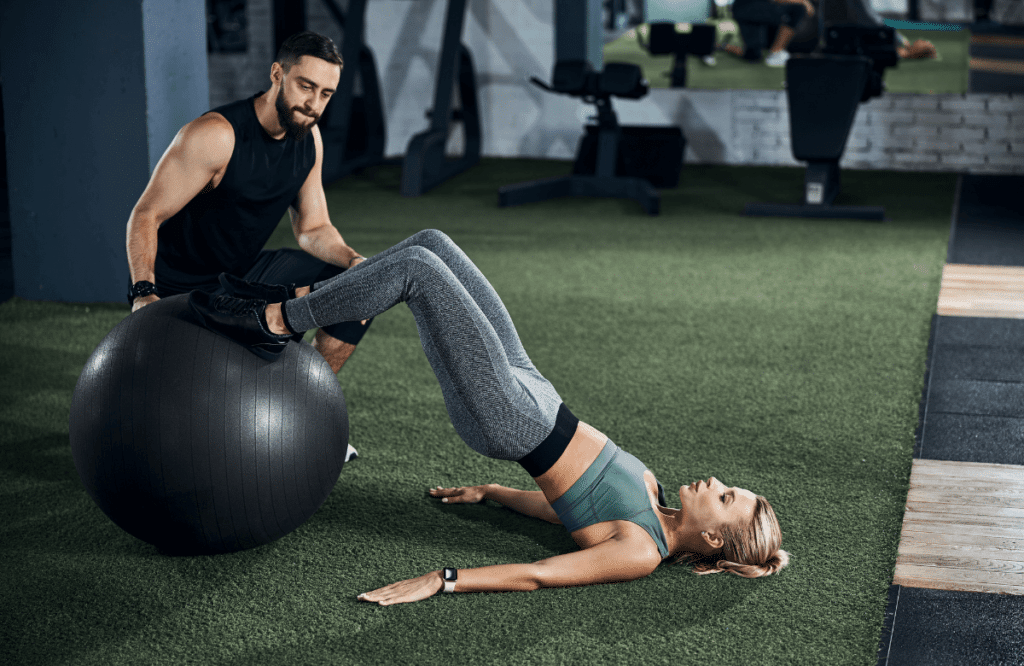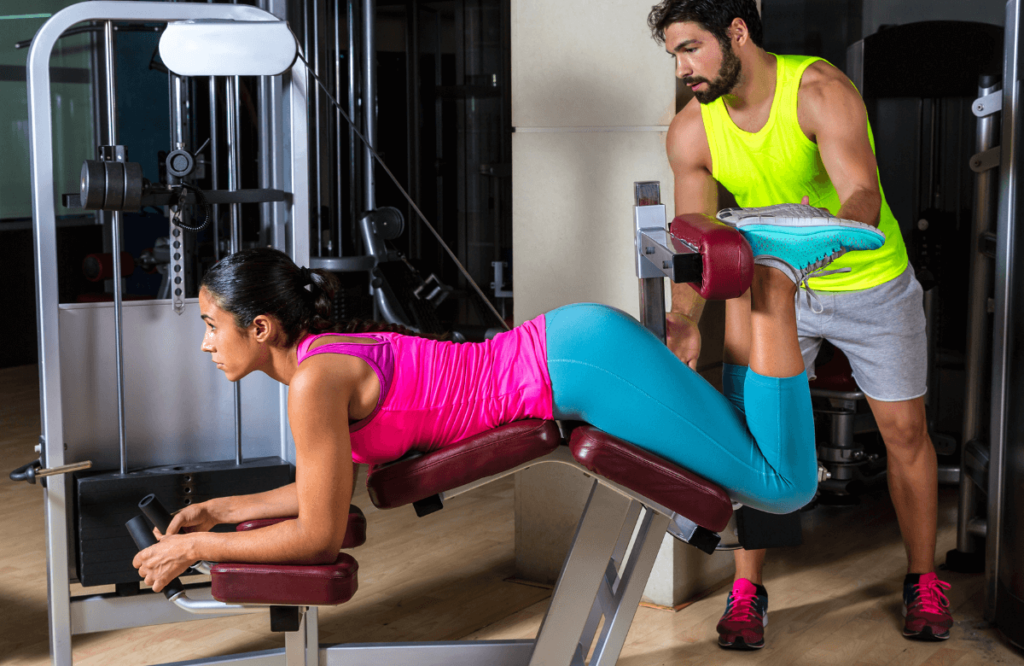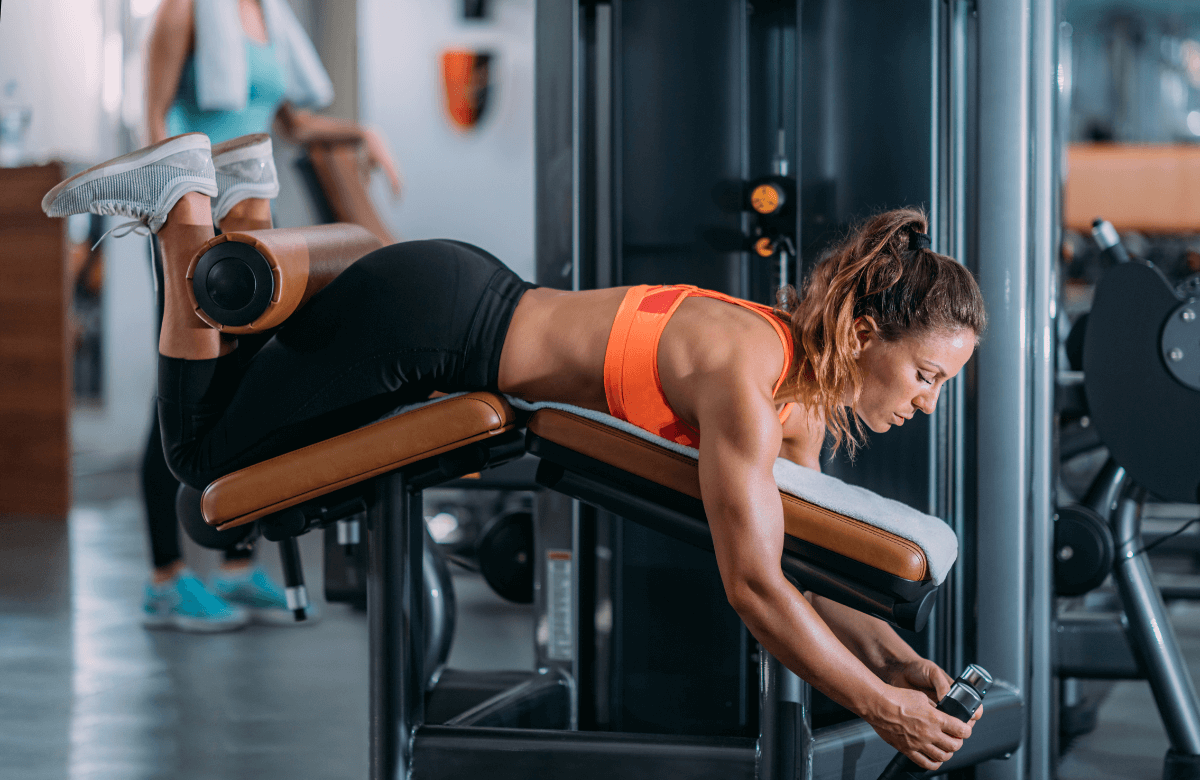The hamstrings are one of the most critical muscles in the lower body. It’s not only aesthetically pleasing, but its function in sports and daily activities is enormous.
Exercises like Nordic curls are a must to keep them strong and healthy. In this article, you’ll learn how to bulletproof your hamstrings and reduce injury risk, whether you are a beginner or an advanced athlete.
You’ll also learn about:
– Hamstring anatomy
– Most common hamstring injuries
– What are Nordic curls?
– Benefits of Nordic curls
– How to do Nordic curls
And more! Let’s jump right to it.
Jump to:
Hamstrings: Anatomy & Function
The hamstrings muscle are located in the back of the thigh, and it’s composed of three muscles:
– Semitendinosus
– Semimembranosus
– Biceps femoris (long and short head)
Their primary function is to flex the knee and aid in hip extension. This muscle complex is also crucial for activities such as walking, running, and jumping (1).
The semitendinosus is the longest of the three heads (44cm), followed by the long head of the biceps femoris (42cm). The semimembranosus is 39 cm long, while the short head of the biceps is 29cm (1).
Most Common Hamstring Injuries
Hamstring injuries are painful and stubborn to recover. These muscles involve necessary actions such as walking, running, jumping, sitting, and standing up.
When an athlete gets injured, they suffer, and their team or club suffers. Research suggests that a player that misses only two weeks due to a hamstring injury will cost top-level European soccer clubs around 250,000 euros.
These injuries are the most common non-contact injury in high-speed sports such as Australian football, American football, rugby, and soccer (2)(3)(4)(5)
Whether these injuries are caused by a single traumatic event or multiple chronic micro traumas is debatable (6). Independent of these possible causes, chances are that there has been a combination of three elements:
– High muscle-tendon unit forces.
– Muscle-tendon units lengthen beyond moderate lengths.
– High-velocity movements (7)
The long head of the biceps femoris is the most common type of hamstring strain injury (8). Athletes with this injury usually experience acute-onset posterior thigh pain at the clinical examination paired with evident bruising.
Although these signs and symptoms will vary depending on the degree of the injury, they can be classified as grade 1 (mild), grade 2 (moderate), and grade 3 (severe) (9).

What Are Nordic Curls?
Nordic curls, also called Nordic hamstring exercise (NHE), is an eccentric exercise (lengthening the muscle) performed on the knees with ankles strapped and lowering the upper body forward as slowly as possible (9).
Although there are setups specifically designed for this movement, you can achieve the same results with different alternatives. As long as your ankles and knees are fixed to a surface, and your torso can move freely up and down, that matters.
Nordic curls have been crucial in reducing injury risk and improving the recovery time from hamstring strains, especially in speed sports such as American football, soccer, sprinting, and rugby (10).
Benefits Of Nordic Curls
Nordic Curls have many benefits for the hamstring’s muscle growth and health. It doesn’t matter if you’re a beginner or an advanced athlete; if you stick to them for a few weeks, you’ll begin to notice positive changes.
The most crucial benefit of Nordic curls is their effectiveness in strengthening the hamstrings. These curls are essential for isolating the muscle and maintaining prolonged fiber tension.
You won’t find a ton of movements that can isolate the hamstrings as much as Nordic curls. Whether you’re a beginner or advanced athlete matters little; many variations will meet you where you’re at, which makes the movement more accessible.
Reduce Injury Risk
The goal for any athlete and regular lifter is to play and stay healthy for the longest. Hamstring injuries are famous for keeping people out of the sport and activity they love for a prolonged time.
Including Nordic curls in your training routine will increase the strength and health of your hamstrings, thus reducing injury risk. Although injuries are somewhat unpredictable, doing the best you can to control what you can control is a must.
Ishøi, et., al showed that training programs that included the hamstring Nordic curl resulted in a risk reduction of 45-65% compared to the usual care.
Enhance Athletic Performance
Krommes and his team conducted a 10-week pre-season Nordic Hamstring Protocol in elite soccer players and found signs of improved explosive acceleration characteristics in the 5-10 meter split times.
Although more evidence is still needed to show how exactly Nordic curls enhance athletic performance, the current studies suggest that it does.
Even if it doesn’t do it directly, it may do so by enabling the athlete to sustain longer and more strenuous training sessions, which will ultimately improve performance.
Easy To Learn
Although this exercise may not be easy to perform initially, it is undoubtedly easy to learn. The movement pattern is basic and straightforward because you only need to think about controlling the way down and contracting the hamstrings on your way up.
The best way of learning the proper form for Nordic curls is, to begin with assisted variations (using resistance bands) and keeping a short range of motion. Once you feel comfortable with these alternatives, you can progress to more advanced ones.

How To Do Nordic Curls
There are many ways to do Nordic hamstring curls. You can use a partner, wrap your legs around a bench with a band, or use a specific Nordic curl machine.
Regardless of the setup, the principle remains the same; having your legs (around the ankle area) and knees fixed to a surface. From this position, the torso and neck should be neutral, while the arms should be held to the sides of the legs or close to the chest.
Let your body fall forward slowly and controlled while driving your heels close to your butt. Your legs won’t move, but this action will increase hamstring recruitment, making the movement more challenging.
Once you’re getting close to the floor, use your hands to stop your body and to push you back to the starting position slightly. Depending on how advanced or strong you are, you won’t need to use your hands to push you back; some people can do so with their hamstring’s strength alone.
Nordic Curls Alternatives
If, for some reason, nordic curls are off the table for you, other alternatives bring similar results and will keep you on the track for building muscle mass in the hamstrings.
Swiss Ball Leg Curls
Swiss ball leg curls are one of the oldest movements for building hamstring strength. They are easy to do and only require a cheap Swiss ball.
For this variation, lay back on the floor and put both heels on the ball. Place your hands on the sides of your legs and lift your hips off the ground. This is the initial position.
Bend your knees, bringing your heels closer to your butt while keeping the hips off the ground. Return to the initial position, and call that one rep. Repeat as desired.
Floor Slider Leg Curls
Floor sliders are one of the most versatile fitness tools on the market. You can perform various movements with them, which cost less than 20 bucks.
Doing leg curls with the sliders is similar to how you’d do them with the Swiss ball. With your back against the floor, place your heels on each slider and bring your hips off the floor.
Bend the knees until your heels are as close as possible to your butt, and take them back until they’re almost straight. All this while keeping the hips off the ground.
Lying Leg Curls
Lying leg curls usually require a machine, primarily present in local gyms. They represent a tremendous variation to the Nordic curls since they’re also an isolation exercise.
If you don’t have access to those machines, you can use a dumbbell between your legs, resistance bands, or ankle weights.
Mistakes To Avoid
Although Nordic curls have a simple setup and won’t require a significant learning curve, there are some mistakes you should avoid to maximize the muscle gains.
Not Warming Up
Hamstrings are known for being sensitive to strains and tears, even if they don’t happen during aggressive movements. That is one of the reasons why warming up the muscle is essential.
Warming up increases the local muscle temperature, which helps the muscle contract and relaxes easier and with more fluidity. This is a simple way to reduce injury risk and improve muscle health for long-term use.
Doing a few assisted reps (using bands) with a shorter range of motion or even practicing an entirely different movement that equally targets the hamstring are good options to warm the muscle properly.
Load It Without Proper Technique
One of the most common mistakes in the lifting world is people loading movements before they can master the proper technique. Nordic curls are a high-isolating hamstring exercise, and loading it before having a solid form can lead to injuries.
We’d recommend mastering the movement pattern with assistance and a shorter range of motion before moving up to a complete bodyweight rep. After that, work until you have enough muscle endurance to load the movement while maintaining a proper technique.
Doing Them Daily
One of the main enemies of muscle growth is not having enough rest between training sessions. Although hamstrings are a strong and resilient muscle group, working them out daily will likely fatigue them to the point of injury.

If you’re a beginner, we suggest you do Nordic curls once a week. More advanced athletes can perform them 2-3 times with different intensities.
It all boils down to how much volume the person can handle safely, considering the other activities outside of the gym that might also target the hamstrings.
Having 1-2 rest days in between is a safe way to minimize any risk of injury and enjoy the most of your workout.
Frequently Asked Questions
Do Nordic Curls Build Hamstrings?
Yes, nordic curls build hamstrings. It’s one of the best exercises for isolating the hamstrings, creating more muscle tension, and building muscle mass and strength.
Are Nordic Curls The Same As Hamstring Curls?
No, nordic curls are not the same as hamstring curls. They have different setups. Hamstring curls usually require a machine that allows the knee to flex and extend, creating the desired muscle tension on the hamstrings. Nordic rings generally lock the feet and knees in a safe position, allowing the rest of the body to move to target the hamstrings.
Are Nordic Hamstring Curls Safe?
Yes, nordic hamstring curls are safe for the majority of people. If you’re a beginner, try using resistance bands or a limited range of motion until you build enough strength to access a full range of motion and level up your hamstrings.














